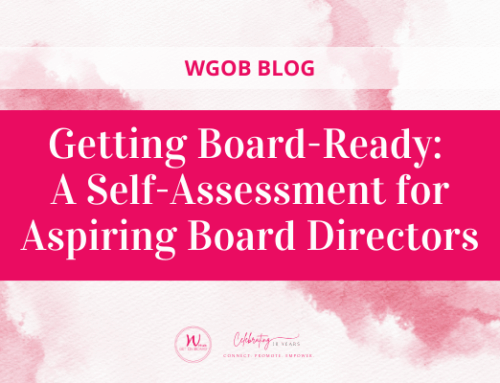
Interview with Violet Konkle, Corporate Director for Not-For-Profit and Corporate Boards.
Can you speak to your experience on a not-for-profit board versus a public company board? Are there differences?
Both types of boards take time, and are expected to provide thoughtful and insightful oversight, whether reviewing strategy or ensuring proper governance. It’s also important to understand that there will be a learning curve with both, so a proper orientation program is vital in both cases to ensure that the new Director ramps up as effectively and efficiently as possible. From a governance pointof view, a Director should not assume that there is a difference in terms of the duty of care expectations. As far as financial controls, risk management and payroll,good governance is always important. And ensuring sound strategy is imperative for both. And on both types of boards, ensuring strong CEO leadership and succession planning is the purview of the Board.
The main difference between not-for-profit and corporate boards is the type of stakeholder and regulatory obligations you must address. Oncorporate boards, you are responsible to the corporation and must consider the interests of all stakeholders. The shareholders in a not-for-profit are different, with donors replacing shareholders, but both expecting the board to act appropriately, representing all stakeholders.
One of the current hot topics on corporate boards is shareholder activism regarding executive compensation, ensuring executive compensation reflects shareholder returns and results.Not-for-profit boards do not experience the same level of scrutiny on executive compensation, but a frugal culture around administrative cost controls is important to ensure that donor funds are directed to the work of the not-for-profit. So the budgeting and cost control disciplines required of a corporate board apply to not-for-profit boards as well. In not-for-profit boards, Directors are still expected to hold management accountable as good stewards of the funds managed.
What attributes/skills do you bring to a not-for-profit experience?
When I joined the board of Habitat for Humanity, they wanted someone with retail experience who had experience in the role of a CEO. They also needed someone with experience with HR and compensation. Based on my skill set, I have also provided strategic insight into the Restore business, which is the Habitat retail outlet. I also served on the Risk Assessment Committee, as Health and Safety governance is an important element for Habitat for Humanity building sites. And I am currently on the Finance Committee.
What attributes/skills do you bring to a public company experience?
The governance committee on Boards will typically prepare a matrix of board membership requirements and highlight the skills and experience of current Directors. This will identify the gaps and help to hone the search criteria for new Directors. All corporate boards require strong, independent financial backgrounds for the Audit Committee, and typically operational and/or general management experience for the Human Resources and Compensation committee.
I asked myself what I could do to add value based on the board needs at the time. I had leadership experience as a CEO and could bring real life operational context to the board. An additional strength was that I understood retail and logistics/supply chain environments.
Are there any tips you would to share our Women Get On Board members to help empower them in seeking out board roles?
Think about what your passions are and where you believe you could add value. Also consider whatboards interest you and then do some research to assess their likely needs relative to your strengths. See who is currently on the board where you might fit well with your particular skill set. You can even call the chair and put forward an expression of interest.
As you look at the matrix of board member requirements, bear in mind that industry knowledge and general executive leadership are important backgrounds to bring to the board table. Sometimes there’s a reluctance on the part of women to take on senior general management leadership roles. Don’t be afraid to get into the heart of the business to develop your skills. There is definitely a need for more women of those capabilities to serve on boards. As you build your toolkit and capabilities in readiness to serve on boards, don’t be shy about asking for these senior general management roles. Some roles will be tough, but we should be bold and give ourselves permission to go after those roles.Done well, they can be immensely gratifying. Consider the “art of the possible” and be prepared to take the risk to go after it. Do it with confidence and conviction and know that it can be done so you can be a role model to others!






